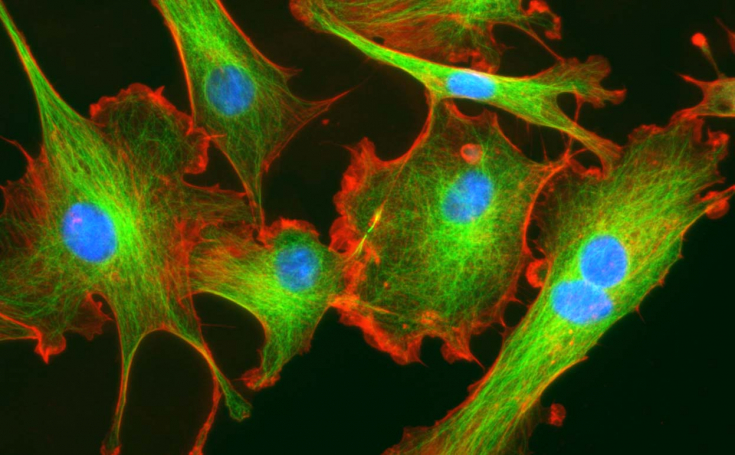Dermal fibroblasts (dFBs) resist infection by locally differentiating into adipocytes and producing cathelicidin antimicrobial peptide in response to Staphylococcus aureus (S. aureus).
In the article estet-portal.com you can get acquainted in detail with the results of the study, which confirms that the skin of newborns enriched with adipogenic dFBs and immature sebum that highly expresses cathelicidin. The pool of adipogenic and antimicrobial dFBs decreases after birth, leading to age-related sebum loss, decreased adipogenesis, and reduced cathelicin production in response to infection.
Transforming growth factor beta (TGF-beta) is a key regulator of adipose tissue and immunity in dermal fibroblasts, and interventions targeting this pathway can effectively fight skin infections, say the researchers.
Regulation of dermal fibroblasts with transforming growth factor beta
Dermal fibroblasts resist infection by differentiating into adipocytes and producing cathelicidin (an antimicrobial peptide) in response to infection with Staphylococcus aureus and other pathogens, according to Dr. Richard Gallo of the University of California San Diego and colleagues.
The team investigated the state of adipogenic function of these fibroblasts during embryonic development of mouse and human skin, and then compared the results with that of adult specimens.
Cosmetology basics: what do we know about fibroblasts
As reported online on December 26, 2019 in the journal Immunity, the authors found that the skin of newborns is enriched in adipogenic dermal fibroblasts as well as immature sebum, which overexpresses cathelicidin.
The pool of adipogenic skin fibroblasts decreases with age.
A decrease in the number of dipogenic dermal fibroblasts leads to loss of sebum, a decrease in adipogenesis and cathelicidin production in response to infection.

TGF-beta has been identified as the main regulator of this process. Additional experiments showed that blockade of the TGF-beta receptor restored the adipogenic and antimicrobial functions of dermal fibroblasts in culture and increased the resistance of mice to S. aureus infection.
TGF-beta receptor inhibitors may be effective components of preparations for combating skin infections.
Follow us on Facebook
New possibilities for the treatment of obesity, fibrosis and diabetes
The following studies will aim to further understand how sebum control is associated with obesity-related disease and fibrosis. In particular, the increase in skin infections that complicate diabetes is believed to be related to these biological systems.
The authors hope to develop drugs that could improve the immune defenses provided by dermal adipocytes.
The clear effect of TGF-beta on fibroblast phenotype and function has been known for over 30 years. Although many agents have been developed to modulate this process, there is still no effective widespread use of agents that regulate signaling & nbsp; to TGF-beta receptors.

The clinical use of anti-TGF-beta in diabetic patients is extremely promising, as TGF-beta may regulate the function of pancreatic islet cells.
What changes in the skin occur with diabetes
Pleiotropic effect of TGF-beta receptor inhibitors
It is worth considering that TGF-beta modulates the phenotype and functions in almost all cell types. For example, only in the skin can it modulate keratinocytes, adipocytes, fibroblasts, vascular cells, and immune cells.
While there is no doubt that fibroblasts are the main actors in antimicrobial defense, modulation of all other cell types by TGF-beta could probably play an important role in the regulation of skin homeostasis, as well as in immune and reparative responses.
TGF-beta targets all cell types, not just fibroblasts.
A huge amount of effort is currently underway around the world to develop specific agents for the regulation of TGF-beta signaling and to use such agents for clinical benefit.
Experiments to test inhibitors of TGF-beta receptors in vivo are possible and will be crucial for the further development of this direction.
Thank you for staying with estet-portal.com. Read other interesting articles in the "Cosmetology" section. You might be interested in First FDA-approved autologous nasolabial fold filler







Add a comment